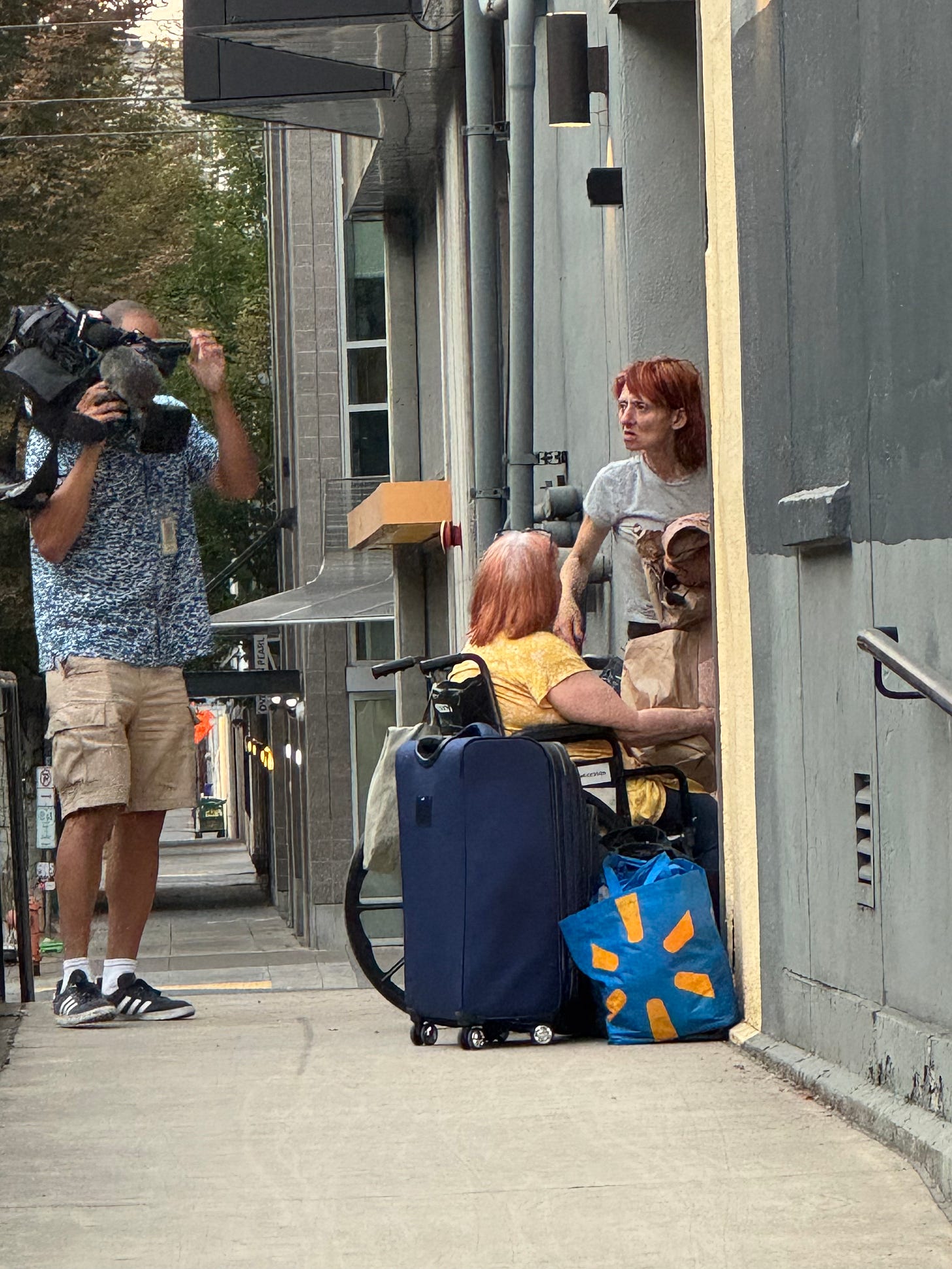The benefits of temporary shelters
Sleep deprivation may cause a range of behavioral issues
The possible negative effects of new shelters at Northwest Lovejoy and Northrup streets dominate conversations with my neighbors. As a Pearl resident, I am devastated by the changes in my neighborhood, and I am anxious that these shelters might make things worse.
At the same time, I can’t ignore research: Overnight shelters provide real benefits for the unhoused.
The biggest benefit is improved sleep. Homeless people have short, fragmented sleep driven by noise, threat, temperature, weather and irregular schedules. Unsheltered people typically get 2–4 hours of restless sleep, while shelter residents typically sleep 6–8 hours in relative safety.
Sleep deprivation is linked to aggressive and antisocial behavior. What I see as irritable and threatening behavior is possibly a reaction to a lack of sleep.
Sleep loss is a trigger for psychotic-like behavior. What comes across as dangerous, out-of-control mental health episodes could have been precipitated by a lack of sleep.
Sleep deprivation reduces cognitive functions that would allow a person to get a job and get off the streets. Attention, memory, productivity and problem-solving are all reduced. What appears to be lazy, self-destructive behavior has part of its roots in a lack of sleep.
Sleep deprivation causes depression, withdrawal and alcohol abuse. Drunken, stand-offish, lazy behavior can be a symptom of lack of sleep.
Sleep deprivation erodes self-control and ethical restraint. Selfish and norm-breaking behavior could be the result of a brain incapable of normal moral reasoning.
Sleep deprivation predicts alcohol and drug abuse. What I see as addicts unwilling to reform is often unsheltered persons responding predictably to a lack of quality sleep. Homelessness is a major predictor of substance-abuse relapse.
Shelters allow clients to bring in some of their belongings. The Northrup Shelter limits belongings to the amount that can fit underneath their beds
This would include medications, valuables, pets, identification and paperwork. Sleeping outside would make these items vulnerable to theft.
Shelters have regular check-ins, lights out and wake up calls. This brings 8-10 hours of controlled predictability to otherwise chaotic lives. This helps clients to keep taking their medications on a consistent basis. This is especially important for those with mental health conditions.
These shelters provide toilets, which reduce public urination/defecation and improves neighborhood sanitation. In these bathrooms there are sinks where persons can take care of personal, disease preventing hygiene.
Shelters reduce the number of people outside at night, lowering the risk of assaults, thefts, and predatory criminals that often target the unhoused. Shelters keep some homeless people who might commit crimes off the streets.
Shelter use reduces public intoxication and public drug use. Open drug use is not allowed in the Northrup Shelter. The facility will not allow anyone back in who departs after 11 p.m.
Multnomah County had the highest death rate of homeless residents (63 per 1,000) among West Coast counties in 2023, with one of the highest proportions of unsheltered homeless people. Regions with more shelter access, like Los Angeles and King County/Seattle, saw lower mortality rates.
Providing overnight shelters can reduce the number of people forced to sleep in public spaces during the day. People “passed out” on the streets, in many cases, have stayed awake all night out of fear for their safety.
Homeless-related events already account for over 50% of Portland Police Bureau calls. When more homeless are at overnight shelters, the numbers of calls to police drop. Calls to fire departments, paramedics and visits to ERs are reduced.
I don’t know if the Northrup Shelter and the one at 17th and Lovejoy will be good for my neighborhood. I suspect that they will be good for Portland as a whole. What I don’t doubt is that they will be good for the clients they serve.





Curtis Holloway, another excellent article — this time on the devastating impact of sleep deprivation among the unhoused. Thank you for highlighting an often-overlooked truth: lack of real sleep drives not only individual suffering but also the wider disorder we see on Portland’s streets. Like many Portlanders, I feel torn between compassion and control.
The President’s executive order signed in July leans heavily on control: mandatory treatment, stricter camping bans, and funding tied to removals. Portland, by contrast, leans on compassion: low-barrier shelters, voluntary services, and the belief that stability must come before sobriety. Yet what often gets lost is the science of sleep, as Holloway recapped. People outside survive on only a few hours of restless, unsafe rest — fueling agitation, psychotic-like episodes, relapse, and despair. A shelter bed can mean several hours of restorative sleep, the difference between chaos and a chance at recovery. Addiction and mental illness keep many trapped there, and drive the visible disorder and crisis on the streets.
If Portland wants change, it must resist the false choice. We need both: shelters that restore humanity and treatment strong enough to break addiction’s grip. Nearly 15,000 people are experiencing homelessness in Multnomah County (Axios, April 2025), shelters run at 92% occupancy (OPB, April 2025), and the Deflection Program has made progress with 486 referrals and 87 completions (Multnomah County, June 2025).
Sleep, stability, and recovery may be the first step toward restoring order — and every night of real rest could mean fewer crisis calls, lighter ER loads, and less strain on already stretched public services. Only time will tell, and clear, concise government reporting is essential to know if our tax-paying dollars are truly being well spent.
Thank you for this valuable perspective on our homeless problem. Your research should encourage all of us to be more empathetic to our fellow human beings. Everyone needs a safe place to sleep.